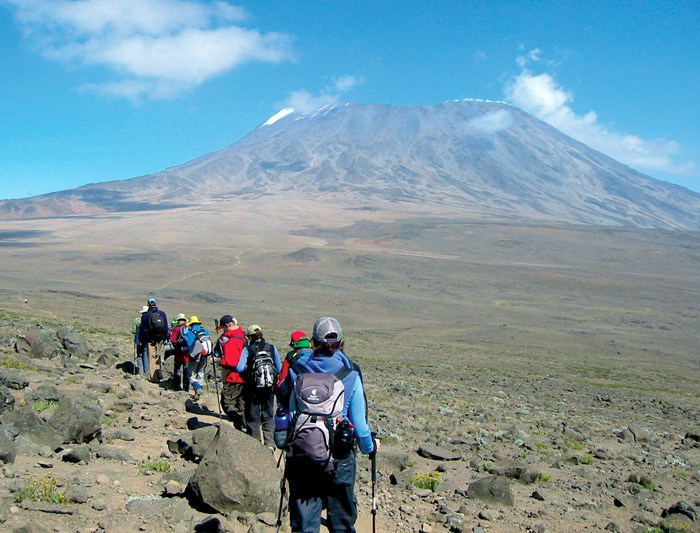- +255 759 222 368
- info@kumekuchaafricasafaris.com

Kilimanjaro treks have a wide range of temperatures so the best clothing is a lot of thin layers. Such clothing is easier to adjust as the temperature fluctuates and is more effective than a few thick items of clothing. Special attention should be made to the fabric of base and middle layers; these garments should be constructed of moisture wicking material that effectively pull sweat away from the body to keep you dry. Cotton is a very poor fabric for trekking and should not be worn.
Porter loads are limited by our standards of porter treatment as well as by Kilimanjaro National Park authorities. Each client should bring a maximum of 15kg (33lbs) of luggage for porters to carry onto Kilimanjaro, so please choose your gear sparingly. You will need to bring at least 2 bags. One should be a daypack which you will carry during your hike. The second bag can be a duffle bag or a backpack. This bag should be slightly larger, from 75L to 90L. Think of your first bag, your daypack as your carry on luggage. You will have access to this bag during the entire day as you hike. This daypack will weigh about 15lbs. It will contain your water, your lunch, snacks, raingear, camera and maybe an extra layer of clothing.
Your second bag is like a check-in bag. You will give this bag to a porter in the morning and he will carry it from campsite to campsite. You will not have access to this bag during the day. It will be waiting for you inside your tent when you arrive at your campsite. This bag will contain all your other clothing and toiletries. If it is a duffle bag, it does not need to be waterproof as the porters will put it inside another larger waterproof bag. If it is a backpack, it should have a rain cover because the porter will most likely wear it as a backpack as he carries it. Any items that are not needed for the climb at all can be safely stored in the hotel.